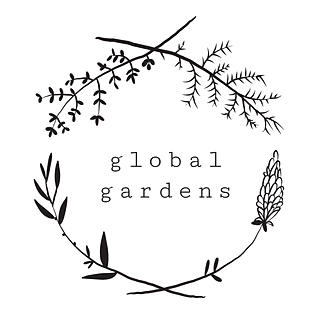EDICULTURE #2
- Global Gardens
- May 2, 2022
- 4 min read
Updated: May 3, 2022
3.05.2022
by Paxton and Poppy
We began our second session reminding ourselves of the wheel of the year, a concept we were introduced to in our first gathering. Whereas previously, we focused on the East, and wild food, today we moved South East of the eight wheel edible culture year.to investigate cultivation and organic horticulture. We acknowledged this practice’s links to Beltane, a Celtic festival celebrated at the start of May, and how it connects to the idea of growing food and learning to cultivate species that are not readily available to us through other means like foraging. In the workshop we covered four themes: soil, cultivation, propagation and harvest.

SOIL
We began the session focussing on soil: the heart of any garden! Soil can be understood as a meeting point between bedrock from below and rotting organic matter from above. We did an observational walk around the Global Gardens project site and surrounding allotments. Stephen invited us to observe the colour of the soil and the weeds growing as indicators of the underlying soil health.
"We were encouraged to consciously observe the soil from different areas at the site, recognising specific aspects which told us about its overall health. For example, darker topsoil indicates high organic matter and therefore more fertility. We also learnt about how the looseness of soil could affect its ability to grow crops. Interestingly, though it is often seen as more of a hindrance to most gardeners, weed growth repairs the soil, often by making it looser and allowing roots to grow deeper and access more nutrients."
Then we dug up a few soil samples to observe soil conditions.
The first soil sample was in the Global Gardens community orchard. It was interesting to observe the depth of the roots and the dark colour of the soil. Generally, a darker soil indicates higher organic matter content. If it feels like a wrung towel that is moist but not wet, that is a good sign of humic activity (microbial soil life). Soil high in organic matter content can also have a sweet woodlandy smell. In the orchard, we could found underlying clay bedrock with signs of silt and sand as well as clay.
Global Gardens is located on mudstone - a sedimentary bedrock formed around 200 million years ago in the triassic period. It is amazing to think that this underlying bedrock was formed in an area of hot deserts! Alongside the mudstone, there were also glacial deposits from the Quaternary period of around 2 million years. This was a moment to drop into the deep time frames we are working with when we think about soil.
The second soil sample was in the organic vegetable patch and was dark, crumbly and sweet structure which was a promising indicator of our composting system.
After looking at soil, we discussed compost by working on the compost system at Global Gardens.
"We collected nettles to place at the bottom of the heap, allowing for air circulation and therefore faster decomposition. Then, we flipped the existing heap by breaking it up with forks and shovelling the newest compost onto the nettles, exposing the oldest, most nutritious soil so it could be readily available for use. We then covered it with carpet to retain heat and moisture. Stephen taught us how one of the ways to kill a plant without burning it is to bury it, hence why the hardier, perennial weeds like nettles were put at the bottom of the heap."
After the session, Stephen shared with us a booklet written by his gardening teacher, Richard Clare 'Eat My Words' . This booklet goes into detail about what proportions of material makes up healthy soil and how different weeds can help soil become healthier, as well as the various levels of unhealthy soil.
CULTIVATION
For the second theme of the workshop, all about cultivating soil for food growing, we started work on the Global Gardens #PeasPleaseTrials where we are growing a range of pea varieties to explore the diversity of taste of different pea varieties. We planted out some of the varieties including Carouby de Maussane, Hurst Green Shaft, Blaushokkers and Sugar Dwarf Sweet Green. Stephen showed us how to stake out peas using bamboo canes and string. We also planted out some chard and kale seedlings.

PROPAGATION
After a tasty lunch of Jerusalem artichoke soup made with from Jerusalem artichokes and parsley from the garden, we turned to propagation. We sowed some parsnip seeds in the veg patch and Stephen also gave a demo of taking cuttings of sage, rosemary and lavender.
HARVESTING
Moving on to the final theme of the workshop, Stephen introduced the eight stages of plant growth: seeds, shoots, leaves, stems, buds, flowers, fruits and seeds/roots - as indicated in the diagram from the Ediculture 'Eat My Words' handbook below. We talked about how the eight stages differ in annuals, biennials and perennials by walking around the garden and trying to find a plant in each stage, from seed to fruit.
8-stages of plant growth


To finish off, we walked around the site to look at which crops could be harvested at this time of the year. We harvested celery, fennel and parsley. Some of the workshop participants headed home with some pea seeds and seedlings to plant out at home.

The Ediculture Course is kindly supported by the National Lottery Community Fund in Wales 'Together for Our Planet' Programme.


















Comments